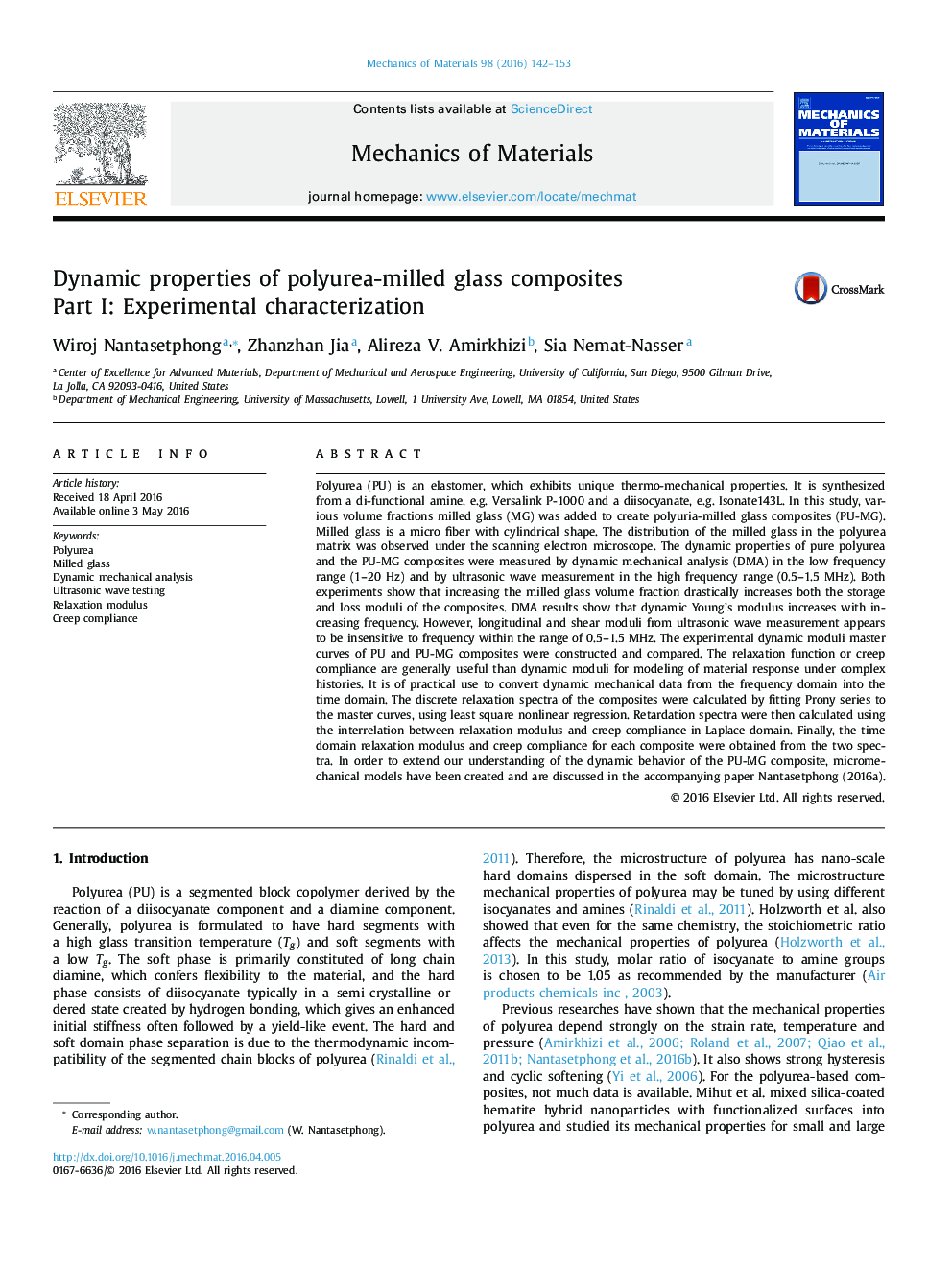| کد مقاله | کد نشریه | سال انتشار | مقاله انگلیسی | نسخه تمام متن |
|---|---|---|---|---|
| 7178615 | 1467441 | 2016 | 12 صفحه PDF | دانلود رایگان |
عنوان انگلیسی مقاله ISI
Dynamic properties of polyurea-milled glass composites Part I: Experimental characterization
ترجمه فارسی عنوان
خواص دینامیکی کامپوزیت های شیشه ای پلی یورو بخش مولد: خصوصیات تجربی
دانلود مقاله + سفارش ترجمه
دانلود مقاله ISI انگلیسی
رایگان برای ایرانیان
کلمات کلیدی
پلی یورا، شیشه ای پخته شده، تجزیه و تحلیل مکانیکی پویا، امواج التراسونیک، مدول آرامش بخش، انطباق خزش
موضوعات مرتبط
مهندسی و علوم پایه
سایر رشته های مهندسی
مهندسی مکانیک
چکیده انگلیسی
Polyurea (PU) is an elastomer, which exhibits unique thermo-mechanical properties. It is synthesized from a di-functional amine, e.g. Versalink P-1000 and a diisocyanate, e.g. Isonate143L. In this study, various volume fractions milled glass (MG) was added to create polyuria-milled glass composites (PU-MG). Milled glass is a micro fiber with cylindrical shape. The distribution of the milled glass in the polyurea matrix was observed under the scanning electron microscope. The dynamic properties of pure polyurea and the PU-MG composites were measured by dynamic mechanical analysis (DMA) in the low frequency range (1-20 Hz) and by ultrasonic wave measurement in the high frequency range (0.5-1.5 MHz). Both experiments show that increasing the milled glass volume fraction drastically increases both the storage and loss moduli of the composites. DMA results show that dynamic Young's modulus increases with increasing frequency. However, longitudinal and shear moduli from ultrasonic wave measurement appears to be insensitive to frequency within the range of 0.5-1.5 MHz. The experimental dynamic moduli master curves of PU and PU-MG composites were constructed and compared. The relaxation function or creep compliance are generally useful than dynamic moduli for modeling of material response under complex histories. It is of practical use to convert dynamic mechanical data from the frequency domain into the time domain. The discrete relaxation spectra of the composites were calculated by fitting Prony series to the master curves, using least square nonlinear regression. Retardation spectra were then calculated using the interrelation between relaxation modulus and creep compliance in Laplace domain. Finally, the time domain relaxation modulus and creep compliance for each composite were obtained from the two spectra. In order to extend our understanding of the dynamic behavior of the PU-MG composite, micromechanical models have been created and are discussed in the accompanying paper Nantasetphong (2016a).
ناشر
Database: Elsevier - ScienceDirect (ساینس دایرکت)
Journal: Mechanics of Materials - Volume 98, July 2016, Pages 142-153
Journal: Mechanics of Materials - Volume 98, July 2016, Pages 142-153
نویسندگان
Wiroj Nantasetphong, Zhanzhan Jia, Alireza V. Amirkhizi, Sia Nemat-Nasser,
